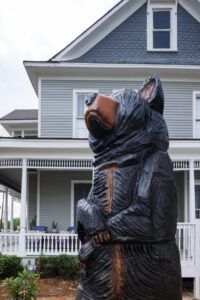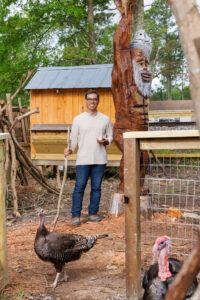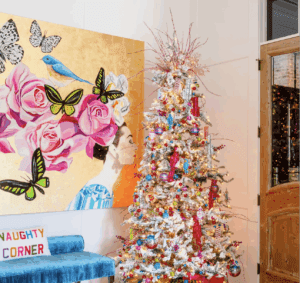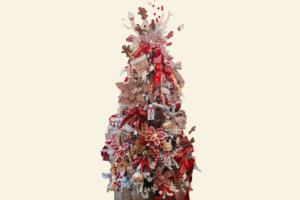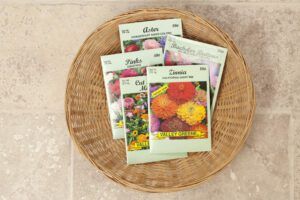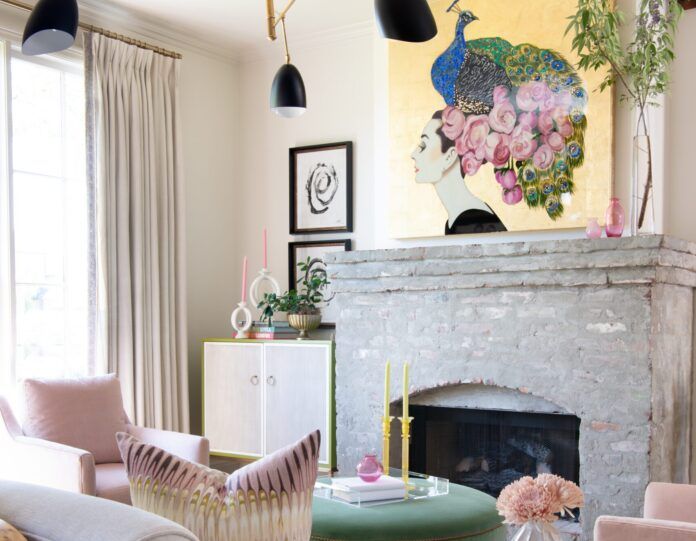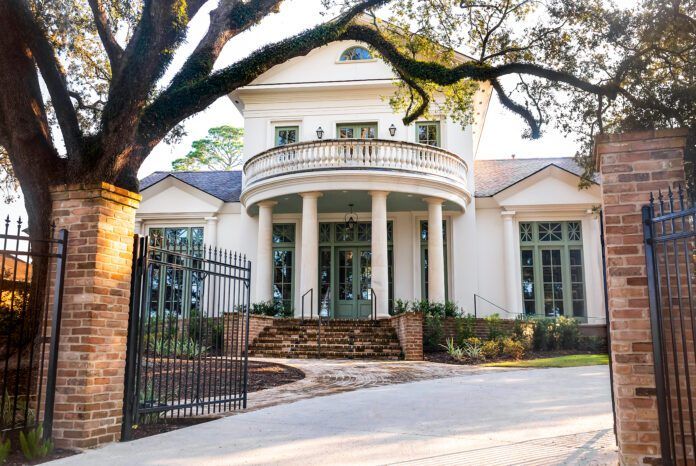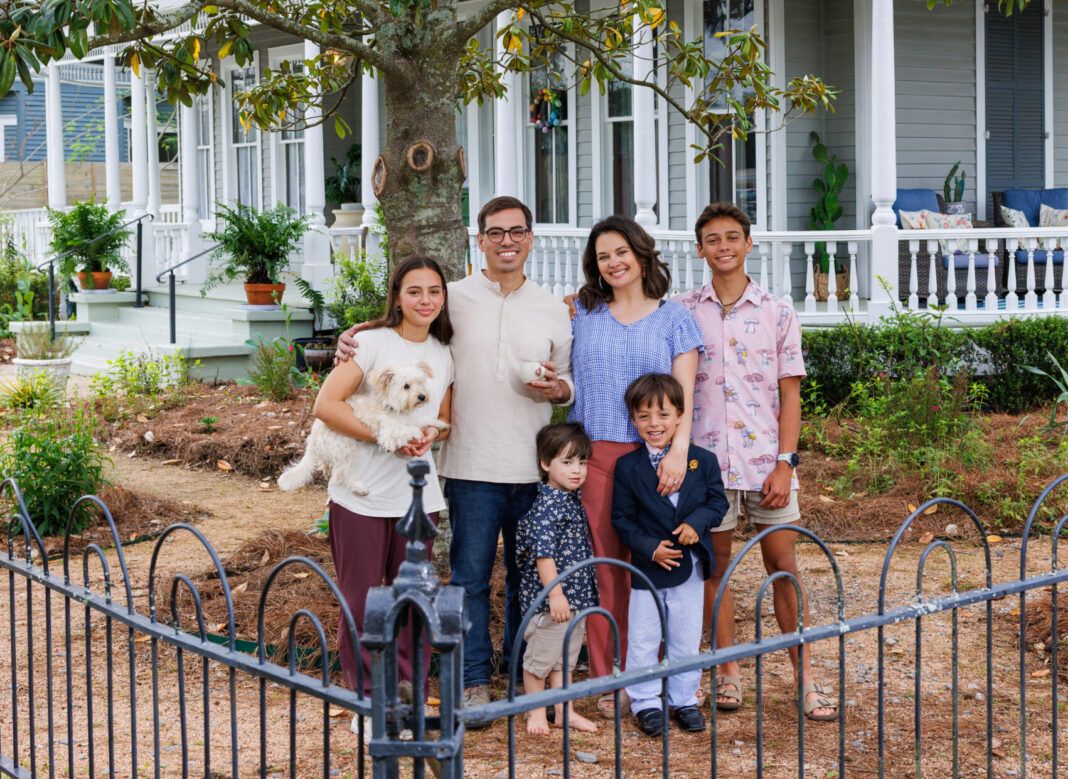
Growing Home: Gardening helps the Gennaro family turn a historic house into home
Soon after Mike and Jen Gennaro married, her grandfather, Alfred “Buck” Bayhi, presented them with a row to call their own among his sprawling nursery of large vegetable and rose gardens on Perkins Road.
Jen grew up lugging buckets of food scraps to her grandparents’ compost pile and wandering through her grandpa Buck’s greenhouse, absorbing early lessons in sustainability without even realizing it. Meanwhile, Mike was a middle schooler in Metairie, raising his first brood of backyard chickens.
Insights from Buck, paired with their shared passion for living in rhythm with nature, became the foundation of the life and gardens Jen and Mike built together. From their first backyard garden in Southdowns to the three homes they’ve made in Zachary, no matter where they put down roots, the Gennaros grow plants that nourish their family, raise animals with care and honor the process from start to finish.
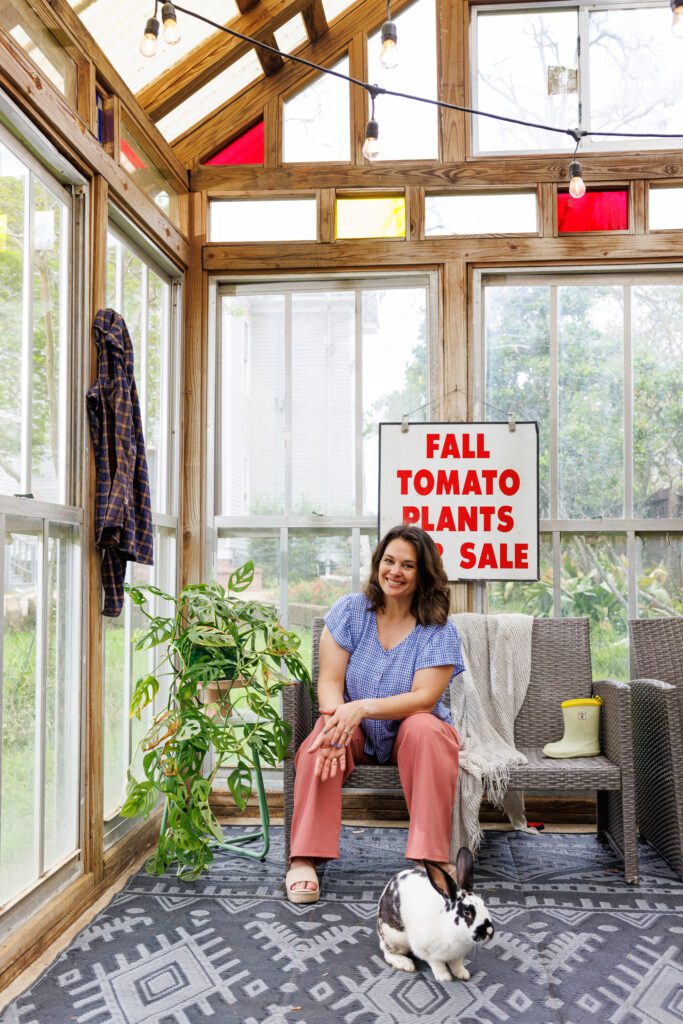
In 2023, the Gennaros began restoring the Ratcliff House, a 121-year-old Victorian in the heart of Zachary’s historic downtown, as a commercial venture. But after eight months of blood, sweat and tears, they realized that their family of six—Max, 16, Lucy, 14, Emile, 6, and Bobby, 3—was who they had been preparing it for all along.
Mike soon set his sights on the cypress knees that overrode the front yard and caused drainage woes. He, Max and Lucy began the arduous process of removing more than 400 of the native knots before Mike hand-dug 400 feet of French drains, which redirect excess water from soggy soil, allowing the garden to breathe. “He worked consistently,” Jen says. “Sometimes for 12 hours at a time, and I’d have to remind him to eat.”
With drainage finally under control, he began reimagining the English garden. The romantic, whimsical design had long suited the storied Victorian home, which was originally built as a private residence after the historic fire of 1903 that razed the majority of the downtown district. Over the years, it has served as a boarding house, private residence and toy store. The answer to “what next?” came when he hosted Caitlin Robbins of Swamp Fly Native Landscapes on Porch & Parish The Podcast—the podcast accompanying the couple’s quarterly community magazine. Through that conversation, he discovered his next mission: a gold-level Louisiana Certified Habitat recognized by the Louisiana Native Plant Society. And they learned from friend and frequent podcast guest, Kellye Jeansonne, owner of Wild Child Kitchen Gardens, that your garden reflects your life. “So ours is organized, beautiful chaos,” Jen says with a laugh.
With a little bit of vision and a whole lot of enthusiasm, Mike headed down I-12 to Beaver’s Abundance Native Plant Nursery in Prairieville. “I left with a Tahoe full of stuff, created a map and went with it,” he says.
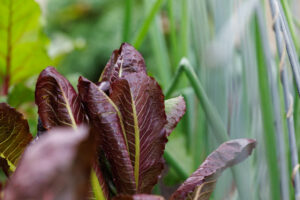
tend three raised beds filled with tomatoes, strawberries, cabbages, lettuce, anise and onions
along with an heirloom mint originally grown
by Jen’s grandfather, which serves as the star of a family recipe for mint vinaigrette, best served
over garden-fresh lettuce. A native mint, known as mountain mint, is grown in the front garden.
To achieve the gold-level designation of the Louisiana Native Plant Society’s Louisiana Certified Habitat Program, an outdoor space must have 75 native plant species or 75% native plant coverage. “I wanted to portray the best of Louisiana,” Mike says. “And it re-seeds itself, which means there’s way less babysitting because native species will just do what they do,” he adds. “It’s free range, like our kids,” Jen quips with a smile.
The Gennaros started the certification process alongside neighbor Deb Bellingham, owner of the McHugh House Bed and Breakfast. “Zachary didn’t have a single gold star on the native garden map when we started, and now we have a whole block,” Mike says.
With the native plants in place, he moved on to the next question: What do we do about these fallen trees and tree stumps? It didn’t feel right to uproot what remained of the catalpa, cherry red oak and mulberry that called the yard home for decades. “I kept looking at the mulberry and seeing an alligator, and figured I could carve it,” he says.
Mike, who once ran the handmade furniture business Barn Dog Mill, has extensive experience in woodworking. “But I did have to call my buddy over to show me how to start the chainsaw,” he says with a laugh. He has since added chainsaw sculptures of a sasquatch and a bear, which neighbors affectionately declare Zachary’s newest tourist attraction.
a 10-foot sasquatch throwing up a rock and roll sign that is in the turkey pen and can be
seen from the road. Carved from a fallen tree
in their backyard, Mike says his inspiration
was to brighten his kids’ day, along with kids who pass their house on the way to school or the snowball stand a few doors down.
Under the care of the Gennaros, the Ratcliff House has blossomed into a backyard homestead boasting of chickens, rabbits, tortoises and, at the time of the photoshoot, two turkeys, along with Winnie, the small, ever-wiggling “snorkie,” aka a Schnauzer-Yorkie, they adopted through K9 Rouge Rescue last year. And it is once again a home.
Ever since that first row in her grandfather’s nursery, the Gennaros have maintained a garden at each of their homes. “When we first moved to Zachary, we had a beautiful, quarter-acre garden,” she says, reminiscing on watching their two oldest toddle around the raised beds ahead of dinner. “We tried to be frugal and only eat from the garden back then,” she says, smiling down at the three raised beds on the side of their house, making note of the patch of strawberries growing in the middle one. “That’s Bobby’s strawberry patch,” she points. Bobby, their youngest, recently turned three and now toddles around the raised beds at their newest home.
The native garden and backyard homestead are more than a collection of plants and animals— they are living reflections of the Gennaro family’s values. Every bloom speaks to their belief in the rewards of tending something over time. Rooted deeply in place, it’s a testament to their commitment to nurturing both land and legacy.




